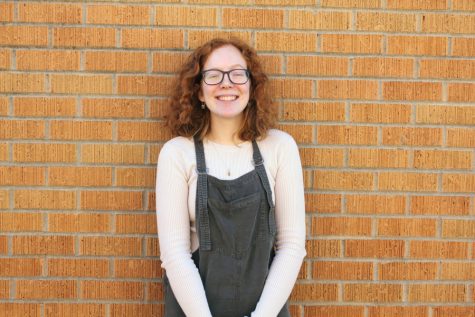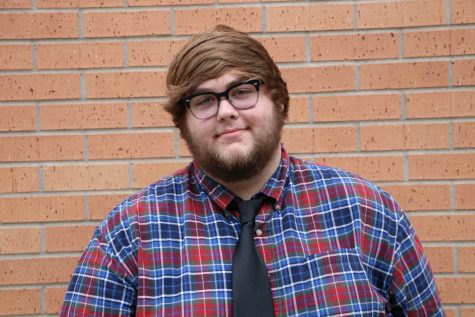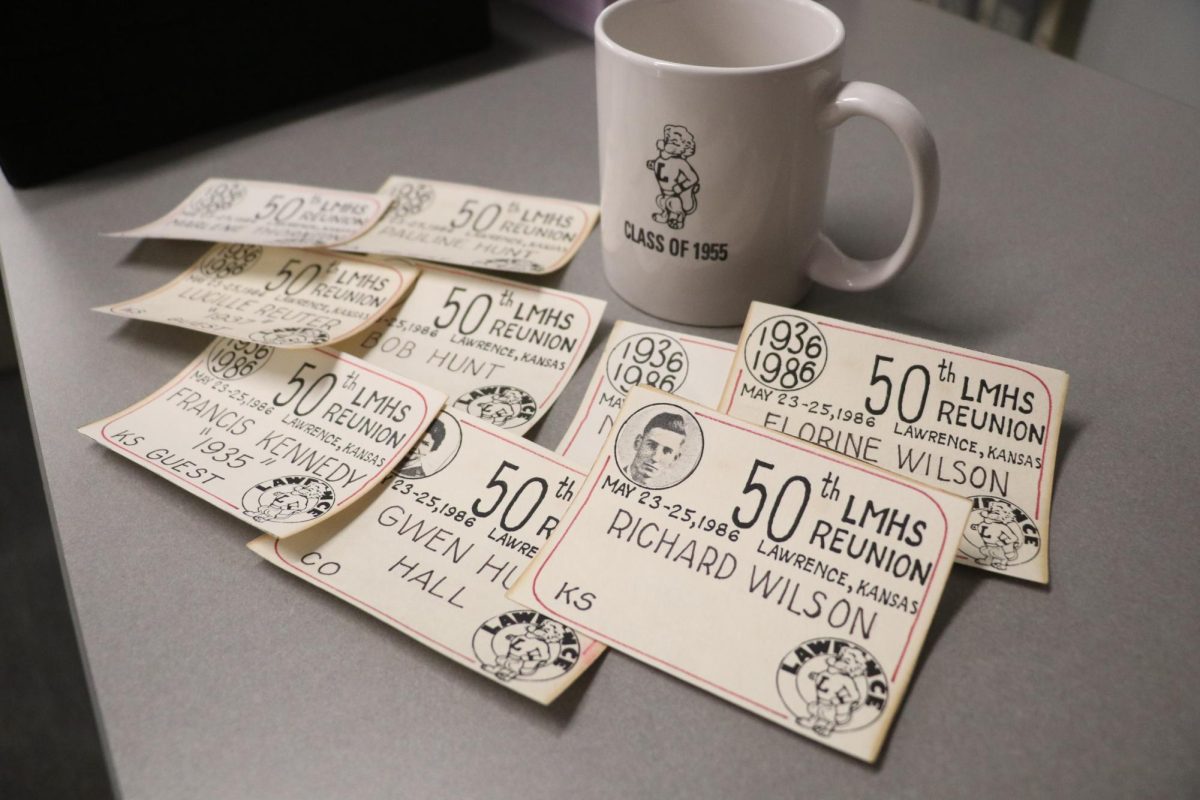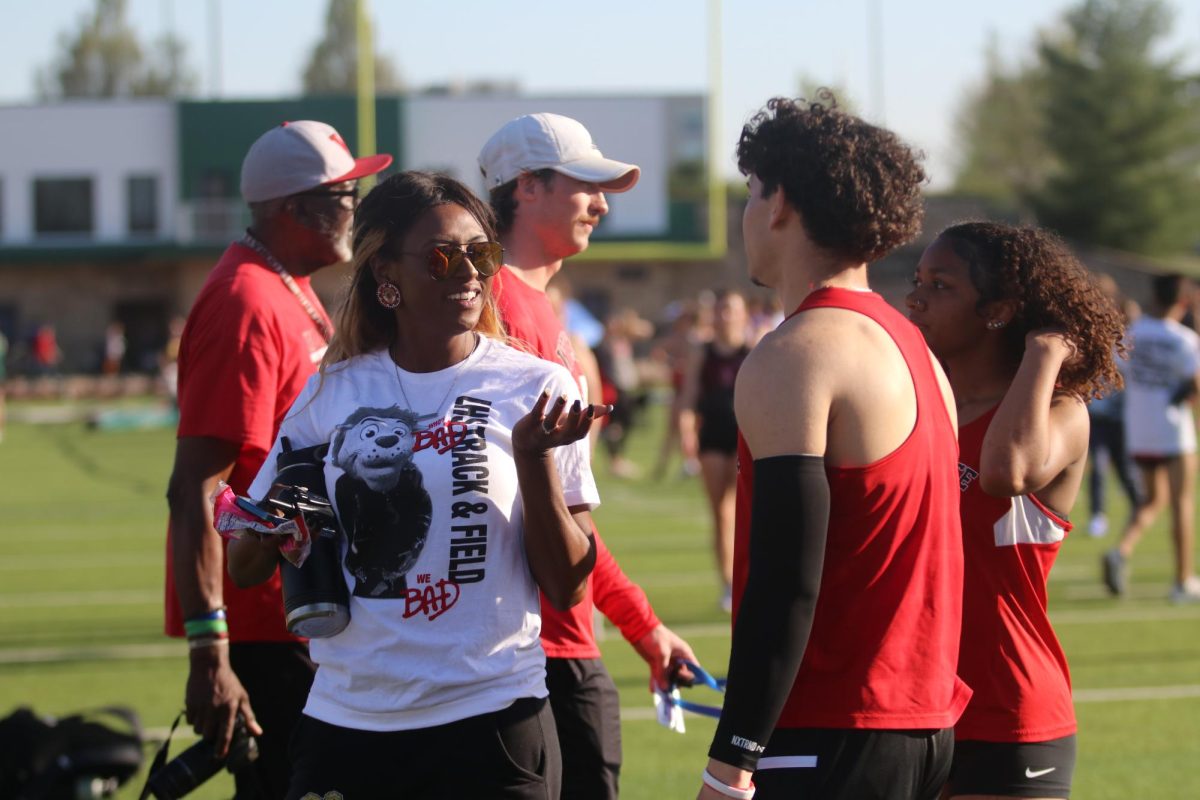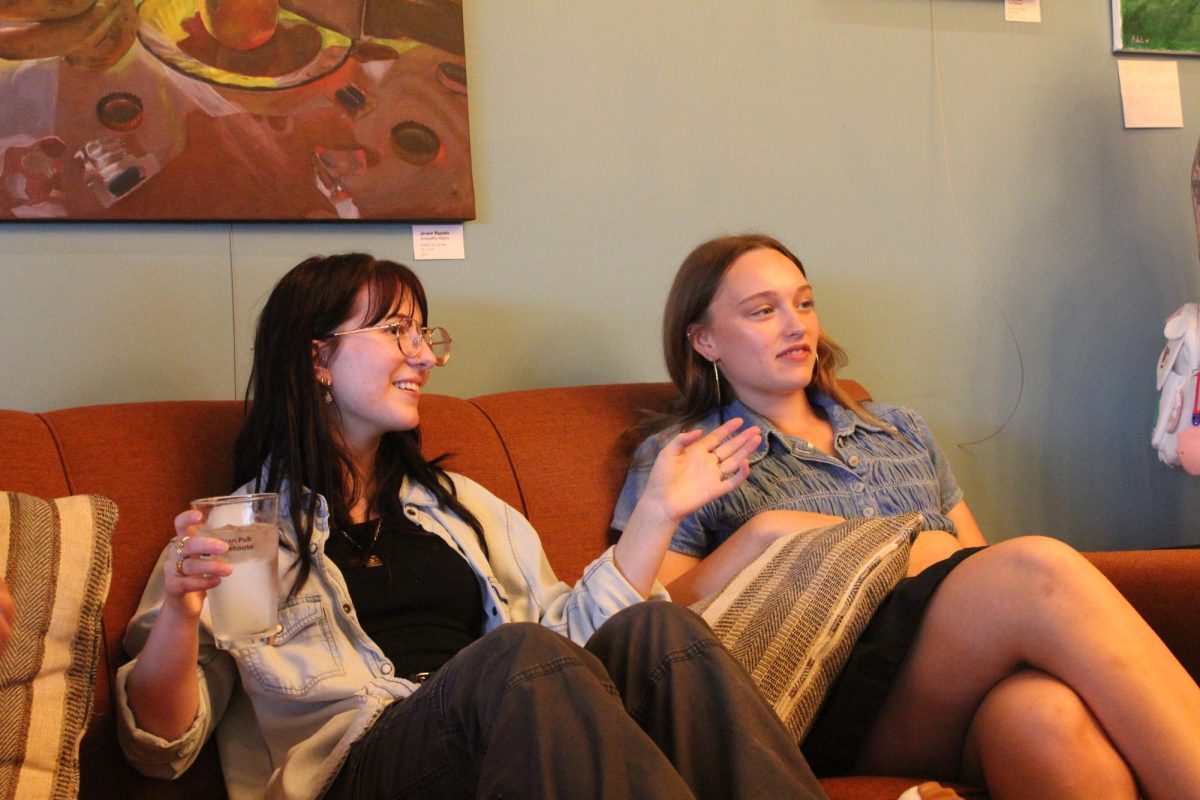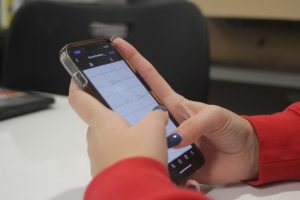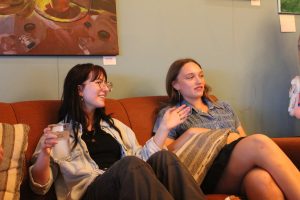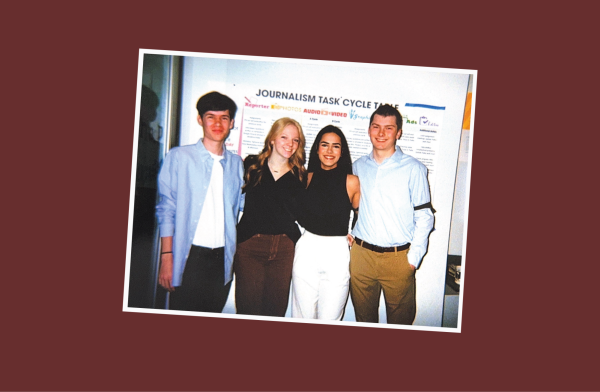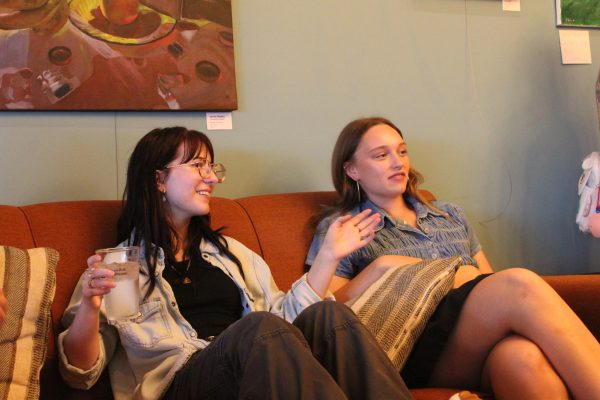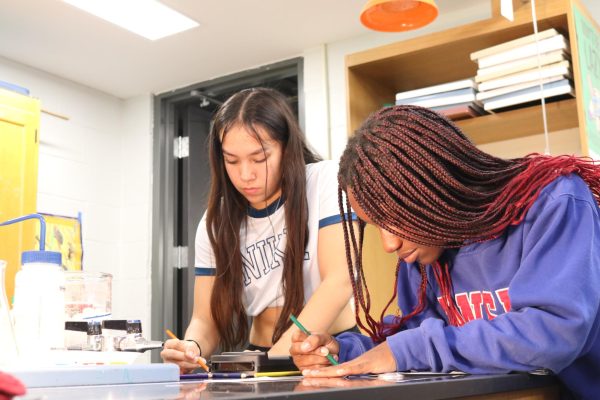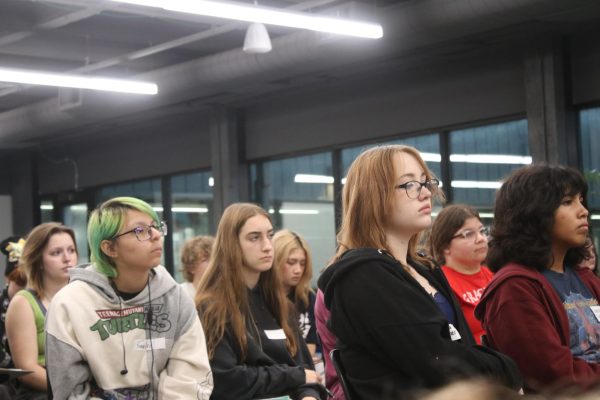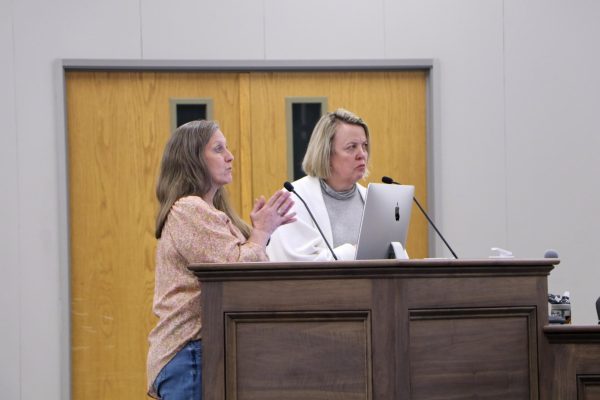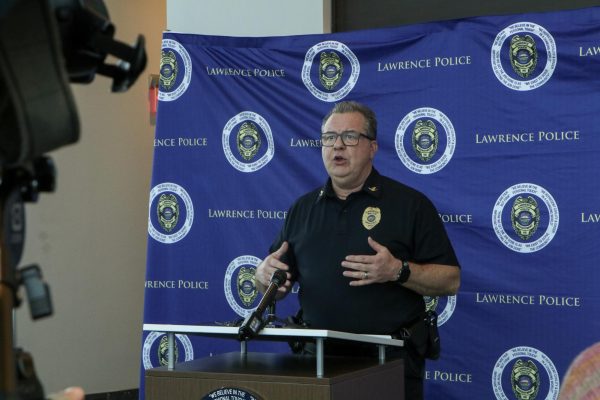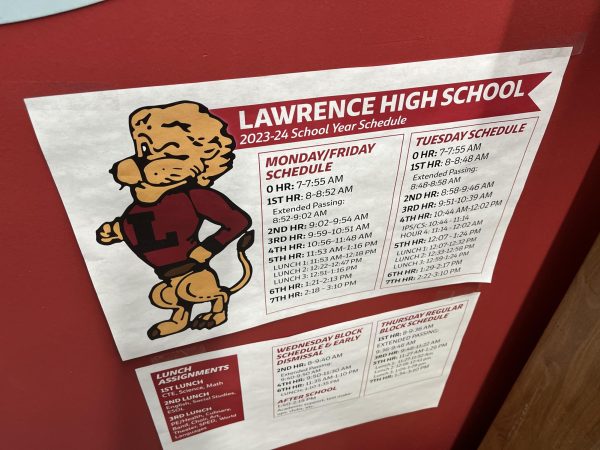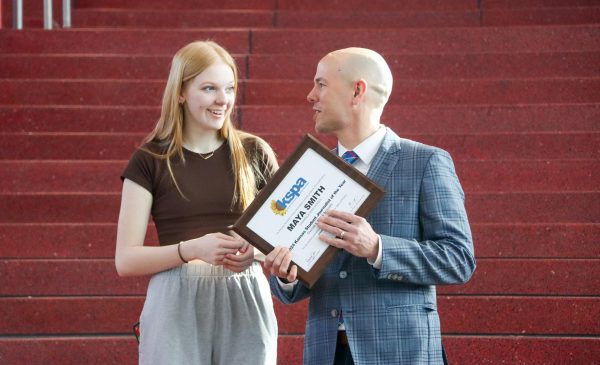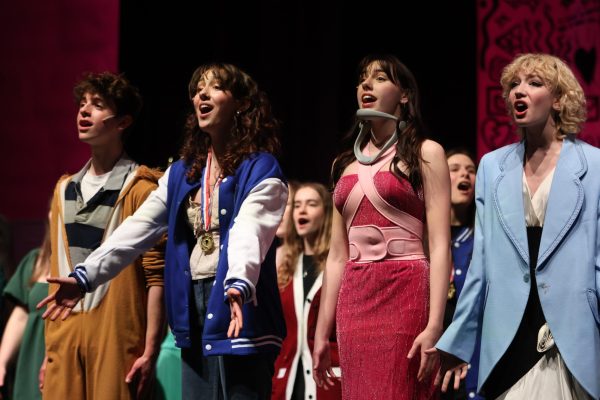Students attend local Black Lives Matter vigil
Students take part in group’s first local event
September 23, 2016
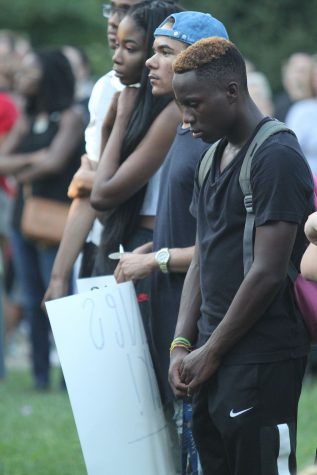
Somber — Senior Janada Birdling, junior Avery Mulally and Mulally’s younger brother, Damon Perico, stand in South Park during the vigil. Mulally spoke about his brother at the event.
On an emotional evening, Lawrence High students and staff attended a candlelight vigil organized by Lawrence’s Black Lives Matter chapter held in response to the slayings of Louisiana resident Alton Sterling and Minnesota resident Philando Castile.
Both black men were shot and killed by police officers.
Among the hundreds who gathered that night in South Park, junior Avery Mulally could feel his anger and sadness rising. During the past few years, the deaths of black men and women by police had resonated with him and the others who gathered July 10.
“The thing about the black community, which I feel like translates to a lot of cultures is, when someone in your culture is hurt, even when you don’t know them, you still feel it,” Mulally said. “Because you know that that could be you. Like when a black person dies, it doesn’t matter if it’s on the west coast or however many states away, it still worries you… That could be someone you love one day.”
Organizers of the vigil had all of the white people in attendance form a barrier around those members of marginalized groups who chose to attend.
“The reality is that people that are racist don’t shoot white people,” co-founder of Lawrence’s Black Lives Matter group Caleb Stephens said. “So that’s why we built the white wall around there, [to be] super symbolic of safety.”
It [the vigil] was very powerful especially for me, being a person that hasn’t really been immersed in people like me and my culture for much of my young life
— Jazmyne McNair
The people on the inside of the ring were invited to address the crowd with a microphone.
“It [the vigil] was very powerful especially for me, being a person that hasn’t really been immersed in people like me and my culture for much of my young life,” senior Jazmyne McNair said. “It [childhood] was very kind of, for lack of a better term, whitewashed. But to know that there are people thinking the same things as you and going through the same experiences as you was very emotional. And I had all of these things that I wanted to say when I got up to speak and then I kind of just said words that were things I was feeling and what I was thinking about, and it was a really good experience and I’m glad that I went.”

Sympathizing — English and theater teacher Jamie Johnson shows support at the candlelit. Photo by Ian Jones
People on the outside were encouraged to listen.
“Being a white woman, it was more, for me, about witnessing and receiving the message and hearing what other people’s experiences are,” English and theater teacher Jamie Johnson said.
For the most part, everyone at the vigil received the message.
“At the candlelight vigil that we had there was a white dude that came up and started quoting Bible verses,” Stephens said. “He interrupted one of the black members that was speaking so I just grabbed his arm and ushered him out, and then he was chased off by a bunch of, like, 50-year-old white women.”
The vigil was a reminder to the community that Lawrence isn’t immune to racism.
“Sometimes I think some community members think that we’re special in Lawrence, and that racism doesn’t exist here, and it does,” science teacher Andrew Bricker said. “Sometimes we just don’t hear the voices saying that it does, and that was a chance to listen to those voices and people spoke their honest truth, and I was there to hear it. And I was really grateful that I was.”
Also in attendance that night was Natasha Neal, founder of community organization Sisters With a Purpose (SWAP). SWAP’s primary goals are “bringing people of all backgrounds together, supporting education of the youth, and fostering positive relationships between the community and local law enforcement,” their website states.
“Our goal, when I formed Sisters With A Purpose, was just to unite everybody and for us to stand and fight the injustice and the systematic oppression that we all… have been experiencing all our lives,” Neal said.
Since its founding in July, SWAP has hosted a back-to-school event for families of color in Lawrence. Things like school supplies, clothing, and food provided by Food Not Bombs were available to those in attendance. Face-painting, bouncy houses, and snow cones were other staples of the event. SWAP members have also organized a march for justice that went down Massachusetts Street and visited North Dakota to protest and halt the construction of the Dakota Access Pipeline at the Standing Rock Sioux Reservation.
As far as future plans go, Neal has expressed interest in meeting with Lawrence’s youth to discuss their concerns.
“What we’d like to do, we want to get with the youth so that you guys can tell us what you guys want, what you guys think can help you…to stay positive,” she said. “It’s all about the kids really, to be honest.”
Neal said one of her favorite parts of the vigil was the fact that multiple students addressed the crowd.
At the vigil, McNair touched on how students of color are treated in schools.
“…Something that I brought up was how kids of color are treated in schools and how I think that that’s a problem that needs to be addressed as well,” she said. “It’s equally as important.”
KU, Stephens said, has room for improvement as well. He attended the Advanced-Standing Masters of Social Welfare program there but said he didn’t learn about activism.
“They teach a specific brand of social work at KU, and it’s white social work,” he said. “And in white social work you don’t have anything to fight for. You’re not fighting, and so the piece that that leaves out is exactly why we need intersectional feminism and not white feminism because you leave out all the things that need to be fought for.”
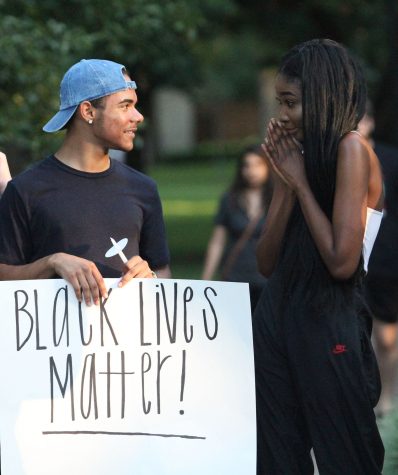
Showing support— Junior Avery Mulally and senior Janada Birdling spread the message of Black Lives Matter at the candlelit vigil held at South Park on July 10.
Lawrence, like its schools, isn’t immune to racism.
“Lawrence just has a lot of compassionate bigotry, as in like people smile and say they support things and then never show up to stuff,” Stephens said. “Or they show up once and then their white guilt has been appeased and they move on.”
Bricker stated that when he speaks about these issues, he’s not trying to be negative. He’s stating facts.
“Sometimes I bring these things up and I’m seen as being negative about this school, and I’m not, I love this school,” Bricker said. “I just think we can actually make a dent in these problems.”
Stephens believes that high schoolers could make a dent in these problems as well.
“High school students now are the wokest people in the country, like [there are] revolutionaries that are in high school,” Stephens said. “I went and spoke at ‘Can We Talk?’ over at Free State like four times, and those kiddos know more about the stuff that’s going on than the college students that I speak with, that I worked with, at KU.”
McNair believes that if students at Lawrence High speak out about injustice and inequality and are willing to be uncomfortable, they have the potential to make a difference.
“I think that overall there needs to be good communication and discussion so we can identify the specific problems that we have and come up with better solutions,” McNair said. “I think part of the problem is that people aren’t really talking….You have to be uncomfortable before you can be comfortable again, so I think that’s the main thing that we need to do is just have more open conversation.”



